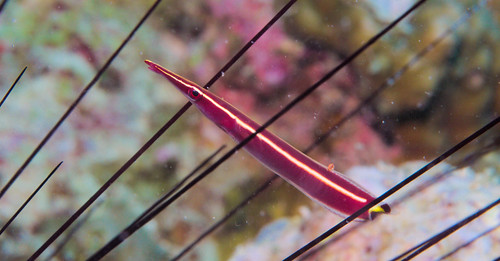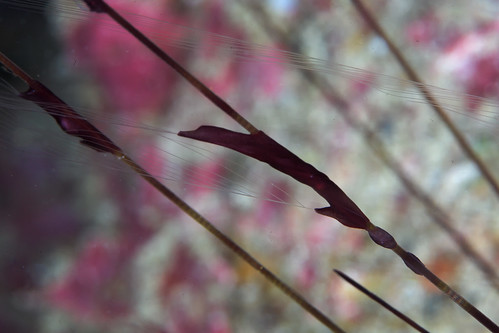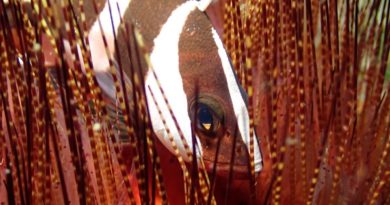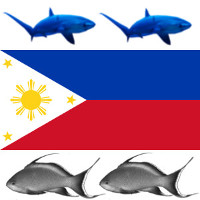Malapasca Urchin Epibiots
I‘m back in Malapascua for a short while, with People and the Sea, and I have already had a great time diving the reefs around the island. Malapascua is the site of a thriving diving tourism, based mainly on the regular (almost daily) chances of sighting thresher sharks at nearby Monad shoal. The island’s reefs also offer a great wealth of small & rare marine animals (“macro photo subjects”). Still, there is no doubt that the area’s reefs are stressed, mainly by over-fishing, in my opinion.
What my friends at People and the Sea tell me is that their reef survey data show them that the number of long-spined Diadema sea urchins is increasing on the reefs around Malapascua. This could be due to the diminished numbers of grazing fishes, such as parrotfish and surgeonfish.
Interestingly, with the large number of sea urchins on the reef, the epibiots living on these urchins are becoming more abundant. I always thought Malapascua was a good spot to see these animals, which live on the urchins, or in-between their spines. The benefit for these epibiots is clear: the spines provide a safe place for them. Given the increase in urchin numbers, it seemed to me during the last few days that the epibiots also have become more common. I spotted several individuals of urchin-living shrimps and fish.
I saw quite a few Crinoid Clingfish, Diademichthys lineatus, which use the spines of the urchins as a safe spot, protected from all the predators on the reef:
Also very interesting are the benthic ctenophres which wrap themselves around the spines. Ctenophores are a separate phylum (a phylum is the largest category in the animal kingdom, for instance arthropods or mollusks are phylla, too) of “jellyfish”, often called the comb jellies. This is a good brief intro into this group of animals.
The ctenophores on the urchins somewhat resemble flatworms, but are in fact quite different animals. I believe the species on the spines is Coeloplana bannwarthi.It has previously been reported from the Red Sea.
The Echinoblog has a nice post about benthic ctenophores living on another group of echinoderms, the sea stars.
This is a shot from Malapascua, from 2 years ago – you can see the feeding tentacles of the ctenophores: I have the impression that they are more likely to have their tentacles out at night.




